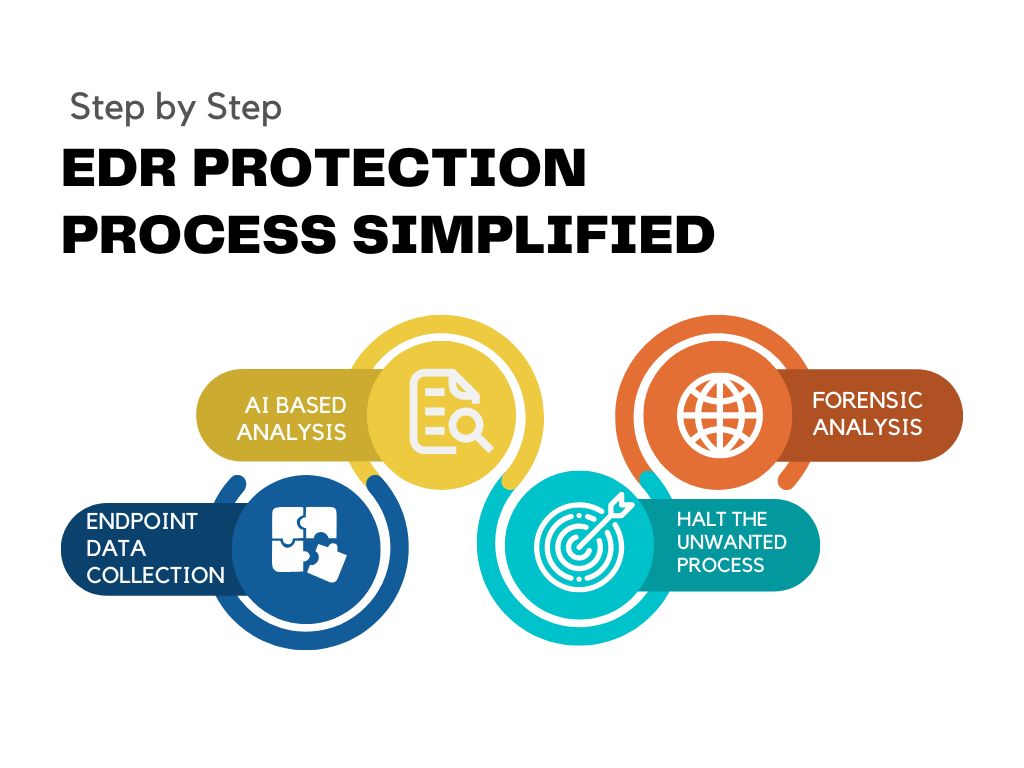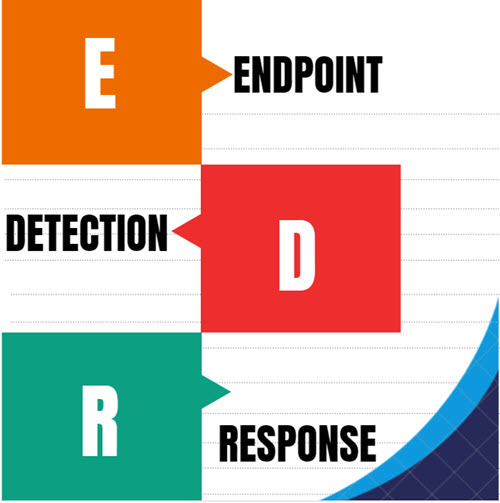Cyber Security is the act of shielding PCs, servers, cell phones, electronic frameworks, organizations, and information from pernicious assaults. It’s otherwise called data innovation security or electronic data security. The term applies in an assortment of settings, from business to portable processing, and can be separated into a couple of normal classes.
· Network security is the act of getting a PC network from gatecrashers, whether designated assailants or sharp malware.
· Application security centers around keeping programming and gadgets liberated from dangers. A compromised application could give admittance to the information its intended to secure. Fruitful security starts in the plan stage, certainly before a program or gadget is sent.
· Data security safeguards the trustworthiness and protection of information, both away and on the way.
· Functional security incorporates the cycles and choices for dealing with and safeguarding information resources. The authorizations clients have while getting to an organization and the techniques that decide how and where information might be put away or shared the entire fall under this umbrella.
· Catastrophe recuperation and business progression characterize how an association answers a network protection episode or whatever other occasion that causes the deficiency of tasks or information. Calamity recuperation arrangements direct the way in which the association reestablishes its activities and data to get back to a similar working limit as before the occasion. Business coherence is the arrangement the association returns to while attempting to work without specific assets.
· End-client instruction addresses the most erratic cyber security factor: individuals. Anybody can incidentally acquaint an infection with a generally solid framework by neglecting to follow great security rehearses. Helping clients to erase dubious email connections, not plug in unidentified USB drives, and different other significant examples is indispensable for the security of any association.
The Size of the Cyber Danger
The worldwide cyber danger keeps on developing at a quick speed, with a rising number of information penetrates every year. A report by RiskBased Security uncovered that a stunning 7.9 billion records have been uncovered by information breaks in the initial nine months of 2019 alone. This figure is over two times (112%) the quantity of records uncovered in a similar period in 2018.
Clinical benefits, retailers and public substances encountered the most breaks, with vindictive crooks liable for most occurrences. A portion of these areas are more interesting to cybercriminals on the grounds that they gather monetary and clinical information, yet all organizations that utilization organizations can be focused on for client information, corporate reconnaissance, or client assaults.
With the size of the cyber danger set to keep on rising, the International Data Corporation predicts that overall spending on cyber security arrangements will come to an enormous $133.7 billion by 2022. State run administrations across the globe have answered the rising cyber threat with direction to assist associations with carrying out successful cyber security rehearses.
In the U.S., the National Institute of Standards and Technology (NIST) has made a cyber protection structure. To battle the multiplication of malevolent code and help in early identification, the system suggests ceaseless, ongoing checking of every electronic asset.
The significance of framework checking is reverberated in the “10 stages to network safety”, direction given by the U.K. government’s National Cyber Security Center. In Australia, TheAustralian Cyber Security Centre(ACSC) routinely distributes direction on how associations can counter the most recent network safety dangers.
Kinds of Cyber Dangers
The dangers countered by network safety are three-crease:
- Cybercrime incorporates single entertainers or gatherings focusing on frameworks for monetary profit or to cause interruption.
- Cyber assault regularly includes politically persuaded data gathering.
- Cyberterrorism is expected to sabotage electronic frameworks to cause frenzy or dread.
Things being what they are, how do pernicious entertainers oversee PC frameworks? Here are a few normal techniques used to compromise cyber security:
Malware
Malware implies malignant programming. One of the most well-known cyber threat, malware is programming that a cybercriminal or programmer has made to disturb or harm a real client’s PC. Regularly spread by means of a spontaneous email connection or real looking download, malware might be utilized by cybercriminals to bring in cash or in politically propelled cyber assaults.
There are various sorts of malware, including:
· Infection: A self-recreating program that joins itself to clean record and spreads all through a PC framework, contaminating documents with malevolent code.
· Trojans: A kind of malware that is veiled as real programming. Cybercriminals stunt clients into transferring Trojans onto their PC where they cause harm or gather information.
· Spyware: A program that covertly records what a client does, so that cybercriminals can utilize this data. For instance, spyware could catch charge card subtleties.
· Ransomware: Malware which secures a client’s documents and information, with the danger of eradicating it except if a payment is paid.
· Adware: Advertising programming which can be utilized to spread malware.
· Botnets:Networks of malware tainted PCs which cybercriminals use to perform errands online without the client’s authorization.
SQL infusion
A SQL (organized language question) infusion is a kind of digital assault used to assume responsibility for and take information from a data set. Cybercriminals exploit weaknesses in information driven applications to embed pernicious code into a databased through a noxious SQL explanation. This gives them admittance to the delicate data contained in the information base.
Phishing
Phishing is when cybercriminals target casualties with messages that seem, by all accounts, to be from a real organization requesting touchy data. Phishing assaults are frequently used to hoodwink individuals into giving over Mastercard information and other individual data.
Man-in-the-center assault
A man-in-the-center assault is a sort of digital danger where a cybercriminal blocks correspondence between two people to take information. For instance, on an unstable WiFi organization, an aggressor could catch information being passed from the casualty’s gadget and the organization.
Refusal of-administration assault
A refusal of-administration assault is the place where cybercriminals keep a PC framework from satisfying authentic solicitations by overpowering the organizations and servers with traffic. This delivers the framework unusable, keeping an association from completing essential capacities.
Most Recent Cyber Dangers
What are the most recent digital dangers that people and associations need to prepare for? Here are probably the latest cyber threat that the U.K., U.S., and Australian state run administrations have covered.
Dridex Malware
In December 2019, the U.S. Division of Justice (DoJ) charged the head of a coordinated cyber lawbreaker bunch as far as concerns them in a worldwide Dridex malware assault. This pernicious mission impacted the general population, government, foundation and business around the world.
Dridex is a monetary trojan with a scope of capacities. Influencing casualties beginning around 2014, it taints PCs however phishing messages or existing malware. Equipped for taking passwords, banking subtleties and individual information which can be utilized in fake exchanges, it has caused huge monetary misfortunes adding up to many millions.
Because of the Dridex assaults, the U.K’s. National Cyber Security Center encourages general society to “guarantee gadgets are fixed, against infection is turned on and forward-thinking and records are upheld”.
Sentiment tricks
In February 2020, the FBI cautioned U.S. residents to know about certainty extortion that cybercriminals carry out utilizing dating destinations, visit rooms and applications. Culprits exploit individuals looking for new accomplices, hoodwinking casualties into offering individual information.
The FBI reports that sentiment digital dangers impacted 114 casualties in New Mexico in 2019, with monetary misfortunes adding up to $1.6 million.
Emotet malware
In late 2019, The Australian Cyber Security Center cautioned public associations about a far reaching worldwide cyber threat from Emotet malware.
Emotet is a modern trojan that can take information and furthermore load other malware. Emotet blossoms with unsophisticated secret phrase: a token of the significance of making a protected secret phrase to make preparations for digital dangers.
End-client security
End-client insurance or endpoint security is a pivotal part of cyber protection. All things considered, it is generally expected an individual (the end-client) who unintentionally transfers malware or one more type of cyber danger to their work area, PC or cell phone.
Anyway, how do network safety measures safeguard end clients and frameworks? To begin with, digital protection depends on cryptographic conventions to scramble messages, records, and other basic information. This safeguards data on the way, yet in addition prepares for misfortune or burglary.
What’s more, end-client security programming examines PCs for bits of malignant code, isolates this code, and afterward eliminates it from the machine. Security projects might in fact identify and eliminate pernicious code concealed in Master Boot Record (MBR) and are intended to encode or clear information off of PC’s hard drive.
Electronic security conventions likewise center around continuous malware location. Many utilize heuristic and conduct investigation to screen the conduct of a program and its code to safeguard against infections or Trojans that change their shape with every execution (polymorphic and transformative malware). Security projects can bind possibly malignant projects to a virtual air pocket separate from a client’s organization to break down their conduct and figure out how to more readily identify new diseases.
Security programs keep on advancing new guards as cyber protection experts distinguish new dangers and better approaches to battle them. To capitalize on end-client security programming, representatives.
Essentially, keeping it running and refreshing it oftentimes guarantees that it can safeguard clients against the most recent digital dangers.
Digital wellbeing tips – safeguard yourself against cyberattacks
How might organizations and people prepare for Cyber dangers? Here are our top digital wellbeing tips:
- Update your product and working system:This implies you benefit from the most recent security patches.
- Utilize against infection software:Security arrangements like Realistic Solution Total Security will distinguish and eliminates dangers. Keep your product refreshed for the best degree of insurance.
- Utilize solid passwords:Ensure your passwords are not effectively guessable.
- Try not to open email connections from obscure senders:These could be tainted with malware.
- Try not to tap on joins in messages from obscure shippers or new websites:This is a typical way that malware is spread.
- Try not to utilize unstable WiFi networks in open places:Unsecure networks leave you defenseless against man-in-the-center assaults.


